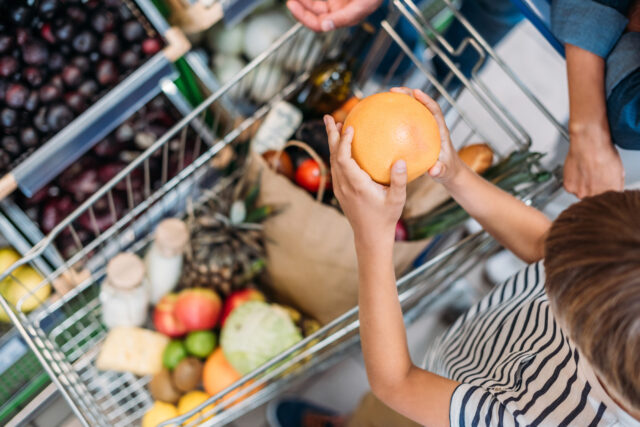How did the largest pandemic-era increases to CalFresh, California’s version of the federal supplemental nutrition assistance program (SNAP), affect resources, work, and participation among eligible households? In a recent event, PPIC researcher Tess Thorman outlined the impact of emergency allotments—boosts to CalFresh in response to the pandemic recession—which offer insights for future downturns and current policy efforts.
The first emergency allotment in March 2020 moved all enrolled households to the maximum CalFresh benefit based on household size; for example, a one-person household could receive up to $194 per month. With this first boost, average benefits grew 43% compared to the month before. Furthermore, benefits no longer changed around income—eligible households received a flat amount.
While benefits rose for many, households that were already eligible for the maximum saw no change. “This was called out immediately in lawsuits that argued that the underlying legislation allowed for increases beyond the maximum, and those [already eligible] should have seen emergency allotments,” Thorman said. The federal government revised the policy, so that in April 2021, all participants received at least $95 beyond their eligible benefit.
Overall CalFresh benefits increased 105% over the pandemic—including adjustments outside of emergency allotments—but escalating inflation in 2021 and 2022 ate into these gains. Factoring in the rising costs of goods, the increase totaled 77%.
The March 2020 boost targeted higher-income earners and those who had safety net resources beyond CalFresh. This boost, however, did not appear to influence whether people continued to work—a finding consistent with national research around SNAP. “CalFresh households were working,” Thorman said, “even those with income so low they did not receive the first boost.”
Other factors of the public health crisis did affect work; unemployment, emergency shutdowns, and measures to protect the public altered income and available resources. Thorman noted that unemployment insurance (UI) began to play a much larger role as the time people could receive UI and the jobs eligible for UI shifted. Before the pandemic, about 2% of CalFresh households had any income from UI—at its peak, this rose to 27%. With this increase, the share of CalFresh households with only CalFresh as a resource fell.
Those who saw the March 2020 boost were more likely to remain enrolled in CalFresh while they were eligible. About a year later, people in this group went on to participate at a 14–18% higher rate than average. Those receiving the April 2021 boost did not respond as strongly. Thorman cited the possibility of a heavier administrative burden or other external factors for households with fewer resources.
“Future responses to an economic downturn could be more equitable,” Thorman said. Such a response could involve more evenhanded solutions, such as rolling out benefit increases to all households at the same time, by a set percentage, or focusing first on the lowest-income households.
To further ensure households are receiving their full CalFresh benefits now, the state could ensure households deduct all eligible expenses. Seeking waivers of federal requirements or supplementing benefits could be other pathways to boosting resources for participants.





